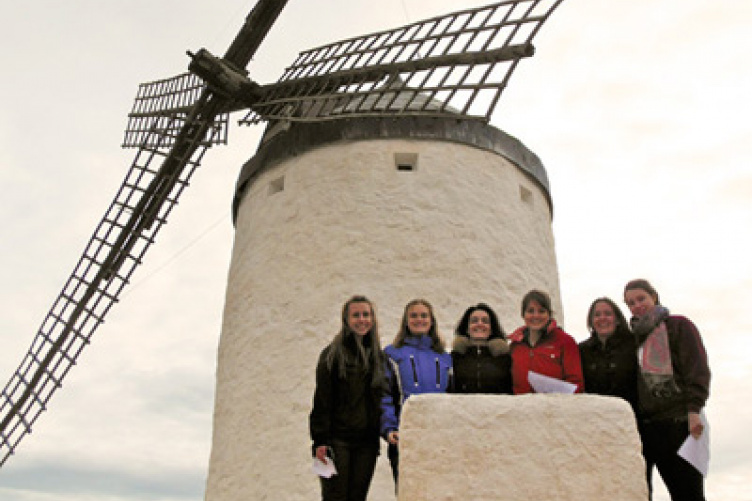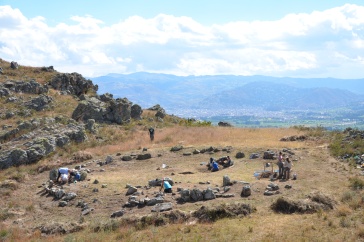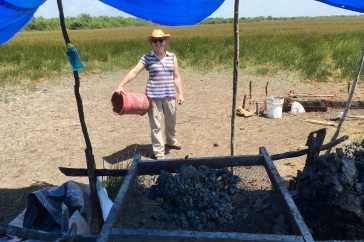
Carman Garcia de la Rasilla (third from left) with students on the UNH Granada Program, pictured here in Consuegra, Spain.
Who said that imaginary places exist only on the pages of books? Don Quixote demonstrates that on any road one may find giants disguised as windmills, fantastic medieval castles or strange caves where our past, although buried, is still alive. Travel and imagination, if they're different things, are the two key ingredients to live out the fantastic and the wonderful and even the impossible.
With this quixotic formula in mind, a group of UNH students and I set out to travel in Spain last spring. We visited some of that land's most important cultural enclaves spanning from prehistory to the present, engaged in direct contact with masterpieces of art and literature, and attended a number of wonderful concerts and performances.
On one occasion, after a three-day trip to the monumental cities of Toledo, Segovia and Madrid, the bus that was taking us back to Granada took an unexpected turn towards a little village of La Mancha on the so-called Ruta del Quijote. Of course I had previously arranged for this stop, but I wanted to take our students by surprise. As they were not anticipating any more excursions that afternoon, they were amazed when all of a sudden, as a mirage up on a hill, a line of tall and majestic windmills along a medieval castle began to appear against the broad horizon of the Castilian plain. They couldn't believe their eyes, just as Don Quixote couldn't believe his when he saw the same windmills. Were they actually there or just the product of their imagination after a short siesta in the bus? For the legendary knight, the mills immediately became the incarnation of the evil giants he had read about in his adventure books and which he had to engage in solitary battle. But, while for Don Quixote reality turns into fiction, for us, errant knights from New Hampshire, the windmills of the famous novel became, on the contrary, pristine reality.
|
Carmen Garcia de la Rasilla was in Spain last year directing UNH's Granada Program. The approach to teaching Don Quixote described above is one of several she suggests to make the novel come alive for students. Rasilla's pedagogical perspectives are explained in a contributed book chapter in Approaches to Teaching Cervantes' Don Quixote, a volume in Modern Language Association's series, Approaches to Teaching World Literature, to be published this spring. |
We performed a reading of the chapter on site, and for a time were suspended between fiction and reality, life and fantasy. Right before our eyes, in the same fantastic landscape that four centuries ago inspired Cervantes to create one of the most famous episodes in literary history, that fictional scene became much more immediate and authentic. Of course, we didn't engage in ferocious combat against those awesome windmills and so escaped Don Quixote's exemplary punishment, but driven by the moment far from that skepticism that denies any reality to fiction, we learned that sometimes fantastic places project themselves beyond the pages of literature and that imagination makes their visit possible.
Originally published by:
The College Letter, newsletter of the College of Liberal Arts
Written by Carmen Garcia de la Rasilla
-
Written By:
Staff writer | Communications and Public Affairs


















































